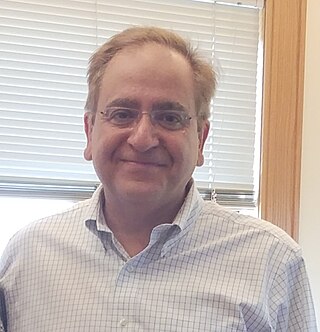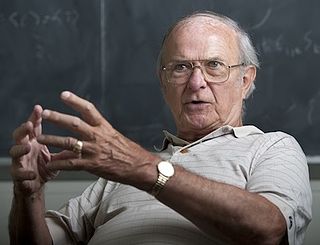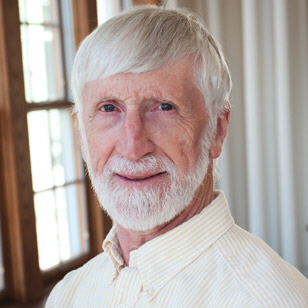Related Research Articles

Steven Weinberg was an American theoretical physicist and Nobel laureate in physics for his contributions with Abdus Salam and Sheldon Glashow to the unification of the weak force and electromagnetic interaction between elementary particles.

Frank Anthony Wilczek is an American theoretical physicist, mathematician and Nobel laureate. He is the Herman Feshbach Professor of Physics at the Massachusetts Institute of Technology (MIT), Founding Director of T. D. Lee Institute and Chief Scientist at the Wilczek Quantum Center, Shanghai Jiao Tong University (SJTU), distinguished professor at Arizona State University (ASU) and full professor at Stockholm University.

Cumrun Vafa is an Iranian-American theoretical physicist and the Hollis Professor of Mathematics and Natural Philosophy at Harvard University.

Shiraz Naval Minwalla is an Indian theoretical physicist and string theorist. He is a faculty member in the Department of Theoretical Physics at Tata Institute of Fundamental Research, Mumbai. Prior to his present position, Minwalla was a Harvard Junior Fellow and subsequently an assistant professor at Harvard University.

The Institute for Nuclear Studies was founded September 1945 as part of the University of Chicago with Samuel King Allison as director. On November 20, 1955, it was renamed The Enrico Fermi Institute for Nuclear Studies. The name was shortened to The Enrico Fermi Institute (EFI) in January 1968.
Jeffrey Goldstone is a British theoretical physicist and an emeritus physics faculty member at the MIT Center for Theoretical Physics.

The MIT Department of Physics has over 120 faculty members, is often cited as the largest physics department in the United States, and hosts top-ranked programs. It offers the SB, SM, PhD, and ScD degrees. Fourteen alumni of the department and nine current or former faculty members have won the Nobel Prize in Physics.The Department of Physics was born when MIT founder William Barton Rogers proposed in 1865 to bring their Mens et Manus philosophy to life by creating a new laboratory of physics and mechanics in another department’s back room.
The Stanford Institute for Theoretical Physics (SITP) is a research institute within the Physics Department at Stanford University. Led by 16 physics faculty members, the institute conducts research in high energy and condensed matter theoretical physics.

Herman Feshbach was an American physicist. He was an Institute Professor Emeritus of physics at MIT. Feshbach is best known for Feshbach resonance and for writing, with Philip M. Morse, Methods of Theoretical Physics.

Carl Richard Hagen is a professor of particle physics at the University of Rochester. He is most noted for his contributions to the Standard Model and Symmetry breaking as well as the 1964 co-discovery of the Higgs mechanism and Higgs boson with Gerald Guralnik and Tom Kibble (GHK). As part of Physical Review Letters 50th anniversary celebration, the journal recognized this discovery as one of the milestone papers in PRL history. While widely considered to have authored the most complete of the early papers on the Higgs theory, GHK were controversially not included in the 2013 Nobel Prize in Physics.
The C. N. Yang Institute of Theoretical Physics (YITP) is a research center at Stony Brook University. In 1965, it was the vision of then University President J.S. Toll and Physics Department chair T.A. Pond to create an institute for theoretical physics and invite the famous physicist Chen Ning Yang from Institute for Advanced Study to serve as its director with the Albert Einstein Professorship of Physics. While the center is often referred to as "YITP", this can be confusing as YITP also stands for the Yukawa Institute for Theoretical Physics in Japan.
The Santa Cruz Institute for Particle Physics (SCIPP) is an organized research unit within the University of California system focused on theoretical and experimental high-energy physics and astrophysics.

Andrew J. Hanson is an American theoretical physicist and computer scientist. Hanson is best known in theoretical physics as the co-discoverer of the Eguchi–Hanson metric, the first Gravitational instanton. This Einstein metric is asymptotically locally Euclidean and self-dual, closely parallel to the Yang-Mills instanton. He is also known as the co-author of Constrained Hamiltonian Systems and of Gravitation, Gauge Theories, and Differential Geometry, which attempted to bridge the gap between theoretical physicists and mathematicians at a time when concepts relevant to the two disciplines were rapidly unifying. His subsequent work in computer science focused on computer graphics and visualization of exotic mathematical objects, including widely used images of the Calabi-Yau quintic cross-sections used to represent the hidden dimensions of 10-dimensional string theory. He is the author of Visualizing Quaternions.
The Herman Feshbach Prize in Theoretical Nuclear Physics is a prize awarded annually by the American Physical Society to recognize and encourage outstanding achievements in theoretical nuclear physics. The $10,000 prize is in honor of Herman Feshbach of MIT. The prize, inaugurated in 2014, is awarded to one person or is shared among two to three persons when all of the recipients are credited with the same accomplishment.
John William Negele is an American theoretical nuclear physicist.
The Maryland Center for Fundamental Physics (MCFP) is a research institute at the University of Maryland, College Park focused on theoretical physics.
Marina Huerta is an Argentinian theoretical physicist and a physics professor. She is known for her work on quantum entropy in quantum field theory. She has provided a new interpretation of the Bekenstein bound. As of 2020, she has 29 peer-reviewed publications with more than 2000 citations.
Barry Ralph Holstein is an American physicist. He is an elected Fellow of the American Physical Society, recipient of the 2019 Herman Feshbach Prize in Theoretical Nuclear Physics, and current editor of the peer-reviewed journal the Annual Review of Nuclear and Particle Science.
Iain William Stewart is a Canadian-American theoretical nuclear and particle physicist at the Massachusetts Institute of Technology, where he is the Otto and Jane Morningstar Professor of Science and the current Director of the MIT Center for Theoretical Physics (CTP). He is best known for his work on effective field theories and for developing the Soft Collinear Effective Theory (SCET).
Leonardo Senatore is an Italian theoretical physicist and professor at the Stanford Institute for Theoretical Physics, the Kavli Institute for Particle Astrophysics and Cosmology, and SLAC. He was recently appointed professor at ETH Zurich.
References
- ↑ "Center for Theoretical Physics | Laboratory for Nuclear Science".
- ↑ "MIT Department of Physics". web.mit.edu. Retrieved 2019-12-30.
- ↑ "MIT CTP at 50" (PDF).
- ↑ "CTP at 50 Program" (PDF).
- ↑ "Breakthrough Prize – Winners Of The 2021 Breakthrough Prizes In Life Sciences, Fundamental Physics And Mathematics Announced". breakthroughprize.org. Retrieved 2020-10-06.
- ↑ "Breakthrough Prize – Fundamental Physics Breakthrough Prize Laureates – Daniel Harlow". breakthroughprize.org. Retrieved 2019-12-31.
- ↑ "Kerson Huang, professor emeritus of physics, dies at 88". MIT News. Retrieved 2019-12-31.
- ↑ "2016 Herman Feshbach Prize in Theoretical Nuclear Physics Recipient". American Physical Society. 2016.